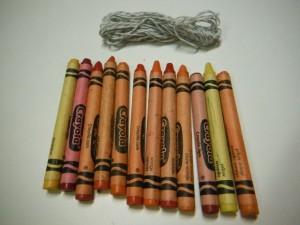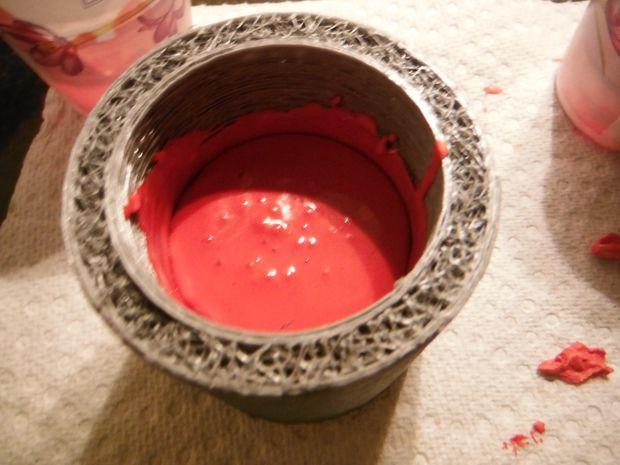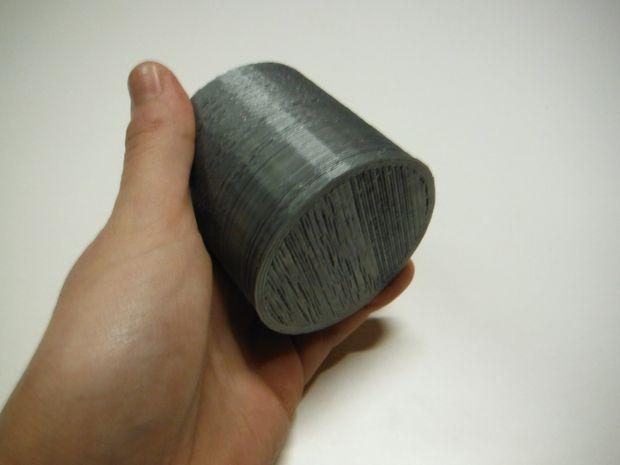In between projects, one MIT engineering student — Lily Marie Jackson, known as “MITInventorbot” on Instructables — decided to go crafty with her 3D printer. A self-professed “passionate inventor,” this maker’s interests range from 3D  printing (last month, we covered her use of leftover filament to create handmade bracelets), Arduino, electronics, electrical, and mechanical engineering to Raspberry Pi and Beaglebone, MITInventorbot used 3D printing to make a favorite craft pastime a little easier. Download the .stl files on her Instructables page and you can produce your own homemade candles.
printing (last month, we covered her use of leftover filament to create handmade bracelets), Arduino, electronics, electrical, and mechanical engineering to Raspberry Pi and Beaglebone, MITInventorbot used 3D printing to make a favorite craft pastime a little easier. Download the .stl files on her Instructables page and you can produce your own homemade candles.
It’s not only a fun project, it’s a money-saving one for just about any college student. MITInventorbot’s process involves 3D printing three different candle molds — a tube, a cylinder, and a cube. If you don’t have a 3D printer of your own, you can easily upload the .stl files to one of the 3D printing services you’ll find online such as Shapeways, Sculpteo, or i.materialise.
Once you have the molds, you’ll need some wax to produce your candles and, of course, you’ll need candlewick. MITInventorbot suggests using crayons, which you will melt and then pour into your molds. The estimate is that you’ll need around 10 to 15 candles and some small paper cups in which to melt them in a microwave.
In the spirit of community, of working together to improve or refine a project, I’d like to suggest an alternative to the crayon step in this project. I want to emphasize, however, that the urban myths about crayons being toxic are just that — myths. Reading products labels is always a good idea and you’ll want to do that if you’re going to use crayons, but most of them are non-toxic, including the dyes, because children are sometimes known to eat them. So, if you’re going the crayon route, melting and burning crayons is not going to harm you, although burning crayons do produce more smoke than your average beeswax candle.
 And speaking of beeswax, I would like to suggest using beeswax as an alternative to melting the crayons. For one thing, using crayons can be expensive if you want the same colors and you won’t likely find a box full of green or orange or purple crayons. Also, as noted above, the crayon wax tends to produce a lot of smoke when it burns.
And speaking of beeswax, I would like to suggest using beeswax as an alternative to melting the crayons. For one thing, using crayons can be expensive if you want the same colors and you won’t likely find a box full of green or orange or purple crayons. Also, as noted above, the crayon wax tends to produce a lot of smoke when it burns.
You can melt it in a double boiler rather than in a paper cup in the microwave. It’s tough to control the temperature in the microwave and you risk burns if you’re not careful. If you don’t have a double boiler, put water in a large saucepan and float a smaller saucepan in it, melting the wax in the smaller pan (kind of like melting chocolate or cheese for fondue).
Beeswax comes in a light yellowish white color. If you want to color your candles using dyes that are not toxic, use food coloring or grate the crayon of your choice into the beeswax as it is melting, stir, and keep adding grated crayon until you get the color you like. Another way to color beeswax, which costs about $8 per lb, is by using spices. You can also add essential oil to your candles for a subtle scent.
Before melting your wax, be sure you’ve prepped your 3D printed molds by inserting the wicks in the center of each mold. For easy removal from the molds, put your fully cooled candles still in the molds into the freezer for a little while and they should pop out pretty easily.
Thanks to MITInventorbot for this great idea and for the 3D printed candle molds! Will you make one? Let us know your thoughts on this fun, easy project in the 3D Printed Molds for Crayon Candles forum thread at 3DPB.com.
Subscribe to Our Email Newsletter
Stay up-to-date on all the latest news from the 3D printing industry and receive information and offers from third party vendors.
Print Services
Upload your 3D Models and get them printed quickly and efficiently.
You May Also Like
Havaianas Collaborates with Zellerfeld to Launch 3D Printed Flip-Flops
The shoe of the summer is undoubtedly the flip-flop. Easy on, easy off, your feet won’t get sweaty because there’s not much material, and they’re available in a veritable rainbow...
UCLA Researchers Develop 3D Printed Pen that May Help Detect Parkinson’s Disease
Diagnosing Parkinson’s disease is difficult. Often, early symptoms of the progressive neurological condition may be overlooked, or mistaken for signs of aging. Early diagnosis can help save lives and improve...
Printing Money Episode 30: Q1 2025 Public 3D Printing Earnings Review with Troy Jensen, Cantor Fitzgerald
Printing Money is back with Episode 30, and it’s that quarterly time, so we are happy and thankful to welcome back Troy Jensen (Managing Director, Cantor Fitzgerald) to review the...
Heating Up: 3D Systems’ Scott Green Discusses 3D Printing’s Potential in the Data Center Industry
The relentless rise of NVIDIA, the steadily increasing pledges of major private and public investments in national infrastructure projects around the world, and the general cultural obsession with AI have...

































